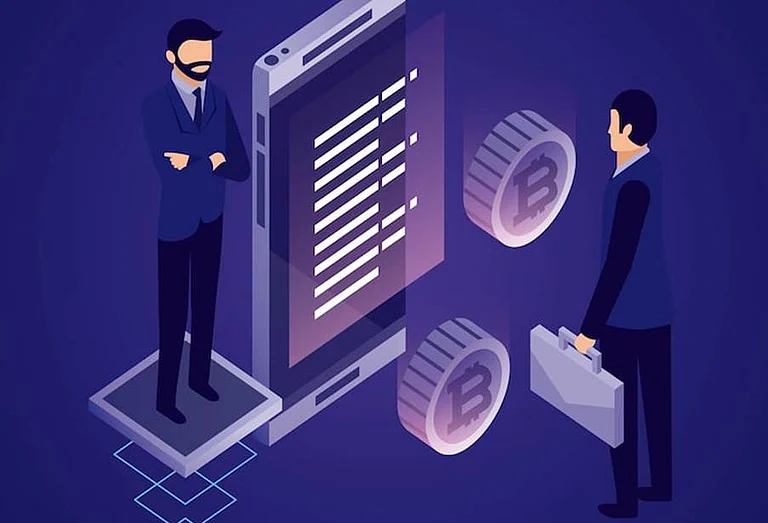In 1981, the Soviet ambassador to India, Yuliya Vorontsov, invited Ghulam Nabi Azad and his wife Shameem to the Soviet Union. Azad along with his wife went for a long tour. They visited the Black Sea and were bored by it. Then they visited Moscow, Switzerland, and London.
When they returned to New Delhi, Azad met Prime Minister Indira Gandhi. She told Azad he was taking oath as a minister the next day. Azad was surprised and suggested that she should instead induct the veteran leader from Jammu, Girdhari Lal Dogra, as minister.
“I want a Ghulam Nabi from J&K,” Gandhi said. Implicit in her remark was that she wanted a Muslim face from the state in her ministry. This is what Azad has narrated in his autobiography ‘Azaad’ published by Rupa. However, to a well-wisher, Azad has told the incident differently, saying Gandhi told him: “Jammu and Kashmir, Ghulam Nabi hota hai, Girdhari Lal nahi.”
Azad’s rise in India’s politics has amazed many in Jammu and Kashmir and beyond. His resignation from the Congress party stunned many regional leaders in J&K. Why did he choose to become a regional leader from a national leader having political connections throughout India? In his autobiography, Azad tries to answer this question but fails miserably.
Born in the remote Soti village in the picturesque Bhalessa block of Bhadarwah, known as the little Kashmir, Azad studied at a local school before moving to Jammu and Srinagar cities. It is at Srinagar’s SP College that he studied science and later joined the University of Kashmir and did his M.Sc in zoology from there in 1973. His father Rahmatullah Batt was a forest contractor and tehsil president of the National Conference. However, it was his uncle Ghulam Rasool Batt that was the guiding light for Azad.
Ghulam Rasool Bhatt, referred to as Bade Abbaji by Azad in his book, studied in London and on return was appointed as a principal of a government school in RS Pura, Jammu. He became a member of the legislative assembly on teacher quota during 1957-64 and later director of education. Bhatt, a literary figure and educationist, would append Azad to his name. That is why people started referring to the family as Azads. That is how Azad acquired Azad surname.
At the SP College Srinagar that Azad formed an anti-copying front and was part of a cultural committee called Bazm-e-Adab. It was at SP College that he became part of Gandhi Smarak Nidhi (GSN) when the GSN cadres visited the college. This became his reason to join the Congress party, according to the book. That is what Azad says. The GSN had been established after Mahatma Gandhi’s assassination in 1948 to promote Gandhi’s teachings.
In those days, the college politics in Kashmir was divided into two sections: the pro-August 15 and the Pro-August 14 ones. According to Azad, the pro-August 15 group would celebrate India’s independence and Pro-August 14 Pakistan’s. Azad chose August 15. When Azad joined GSN, Mufti Mohammad Sayeed was minister in Mir Qasim-led Congress government. Then all of a sudden, we see Azad becomes State President of the Indian Youth Congress while Mufti was President of the Congress. He gets close to Sanjay Gandhi.
In 1978, Congress forms the All Indian Muslim Youth Congress and Azad became its first president. On December 20, 1978, when the parliament passed a resolution expelling Indira Gandhi for contempt of the House, Azad says it was like “worst fears coming true”. Gandhi was arrested and Azad along with others was also arrested.
As Charan Singh-led Janata Party government fell, leading to the general elections of 1979, Indira Gandhi told Azad to contest from the Washim constituency of Maharashtra, where during campaigning, Atal Bihari Vajpayee would give taunt of “Kashmiri boy” to him, accusing Indira Gandhi of “importing someone from Kashmir”. And it helped Azad as everyone in Washim was keen to see “this Kashmiri boy that Vajpayee had taken on”.
In 1980, when election results were declared, Congress won and Azad also won from Washim. In the same year, Azad married his love, the nightingale of Kashmir, Shameem Dev. Azad writes briefly about his love life, telling readers that Shameem’s father and his uncle were friends. Both families were visiting each other and he too was visiting Shameem’s family. She was visiting his family house. “Love blossomed, and we decided to get married,” writes Azad. The wedding ceremony was held from March 27 to March 29, 1980. Sanjay Gandhi attended the wedding and remained in Srinagar for three days.
Sanjay Gandhi died in a plane crash on June 23, 1980. Immense grief over his death turned Azad unconscious for the next two days. In his own words: “I would regain the sense in between, only to cry out incoherently and behave erratically, and the doctor had to sedate me.” A month after Sanjay Gandhi’s death, the Prime Minister called Azad and asked him: “Don’t you think Rajiv should join politics?” Then we see Azad organising a huge rally on Sanjay Gandhi’s birth anniversary in which Rajiv Gandhi gives a brief address.
A year later, both Azad and Rajiv were touring different states from Kashmir to Meghalaya. Azad talks at length about how close he was to the Gandhi family.
“One day, in 1981, Indira ji called me to her Akbar Road residence. Rajiv was present too. She told Rajiv, ‘now both of you have to work together for years to come. Go with Azad (this is how she would address me) to different parts of the country, but remember one thing: He has a mind of his own and calls a spade a spade for the good of the party. If he can say ‘no’ to me, you too will not be spared, but that doesn’t mean he disrespects you.”
Azad says that when Indira Gandhi once recommended two names for the post of General Secretary of IYC, he had written to her to say that they didn’t meet the criteria to be included. “You did the right thing, I was not aware of the criteria details,” Indira Gandhi told him later and Azad concludes that Indira was not dictatorial in her approach.
Indira Gandhi gave portfolios of law, justice, and company affairs to Azad. In 1983, he requested her for information and broadcasting ministry as “law and justice was Greek” to him. Gandhi gave him a portfolio of his choice. Azad says he proposed hourly news bulletin on the pattern of the BBC for All India Radio (AIR) as those days AIR had only three news bulletins. His senior minister HKL Bhagat rejected the proposal. Azad complained to Indira Gandhi. She called Bhagat and gave him her piece of mind. Next, Bhagat tells Azad, “You are free to do anything, mere baap.”
In October 1984, Azad and Rajiv visited Ladakh. They visited Pangong Lake and Chushul and stayed in bunkers. On October 31, 1984, Indira Gandhi was assassinated. Rajiv Gandhi became the Prime Minister. And in the elections held that year, Rajiv Gandhi visited Washim, the constituency of Azad, and addressed the gathering over there. As the Congress registered a historic victory by winning 414 seats, Azad wants us to believe that his suggestion to Rajiv Gandhi that if “any of our Lok Sabha candidates trailed in any segment of Assembly segment of his Lok Sabha constituency, the MLA concerned will be denied re-nomination in forthcoming elections” played a huge role in the landslide victory. Rajiv gives the portfolio of Minister of State for Parliamentary Affairs to Azad.
In 1986, Azad was given the portfolio of the MoS for Home Affairs with Butta Singh as his senior minister. Seven months later, Azad visited the Prime Minister and sought food and supplies ministry and he was given. During the Bofors controversy, Azad stood by Rajiv. Subsequently, he was made in-charge of Punjab and Uttar Pradesh and Azad travelled widely in both states to revive the fortune of the Congress. In the 1989 general elections, Congress lost polls and VP Singh became the Prime Minister and Rajiv started devoting more time to the party. Azad was sure that the VP Singh government would not survive for long.
As the militancy erupted in Kashmir in 1989 and the government sent Jagmohan as governor to Jammu and Kashmir, leading to the resignation of Chief Minister Farooq Abdullah, Azad blamed the Centre’s mismanagement responsible for the crises.
As the BJP is praising Azad these days, one wonders what could be BJP’s take on Azad’s view about Kashmiri Pandits’ migration from the Valley. “The Centre’s mismanagement of the problem led to the mass exodus of Kashmiri Pandits, which remains a blot on the people of Kashmir in general and the Janata Dal government in particular, whose representative, Governor Jagmohan, was heading the government in J&K at that time.”
Azad says Pandits were facilitated to migrate to Jammu in public transport arranged by the government, “thus making their return to their homes more problematic”. “Most people, including the Pandits, thought the migration would be a temporary matter and once the situation normalized in six months or so, those who had left would return. That never happened because the situation in Kashmir turned from bad to worse in the coming years,” writes Azad.
Azad’s family had to migrate from his native place Bhalesa after militant threats. And his brother-in-law Tassaduq was abducted by militants and was released after six months of captivity.
While Azad held the minority government of VP Singh responsible for the deteriorating situation in Kashmir, the government soon fell and Chandra Shekhar took over. In March 1991, the Chandra Shekhar government fell as Congress withdrew support to it after taking exception to the Haryana police keeping two constables to keep an eye on Rajiv’s residence. Azad calls it an unwise decision over an unimportant issue. On May 21, 1991, Azad heard news of Rajiv’s assassination when he was in the Vidarbha region.
“I sobbed throughout the train journey…I was vomiting blood while coughing,” writes Azad.
PV Narasimha Rao, who had refused to contest Lok Sabha elections and had decided to retire from politics and had not campaigned for the party, was persuaded to become the Prime Minister.
On December 6, 1992, both Prime Minister and Home Minister were not reachable from the morning when the demolition of the Babri Mosque began, Azad reveals. He also adds that the Prime Minister had conveyed to him that being the parliamentary affairs minister he could inform to the parliament that Home Minister will resign. After Azad announced it and the parliament started functioning smoothly for a few days as the members from Left and other parties waited for the resignation of the Home Minister, the Prime Minister told Azad to “forget” the resignation.
Azad writes, “Clearly, the PM was buying time as he had no desire to axe Chavan. It reminds me of Rao’s famous quote: ‘Not taking a decision is also a decision!’”
From 1991 to 1996, Azad would visit Jammu and Kashmir frequently as per instructions of Prime Minister Rao. Azad gives the impression that Rao was frequently calling him and also seeking his suggestion, especially in times of crisis. Azad says Rao told him one day: “Arey Bhai, your good Madhavrao Scindia has resigned, and he refused to reconsider his decision.” Azad tried to intervene but failed. Rao gave the Ministry of Civil Aviation to Azad. Azad tells us that Chandraswami was close to Rao. “They were so intimate that Rao sometimes would leave in the middle of the Cabinet and CWC meetings to meet Chandraswami in an adjacent room,” writes Azad. At one Cabinet meeting, Azad says he posed a question: “I want to know who the PM is: Rao or Chandraswami?’ Pin-drop silence descended the room at my audacity.”
In 1996 polls, BJP won 161 seats and Congress 140 seats. Azad blames Rao for the defeat. In the CWC meeting, Azad gave a speech in the presence of Rao: “Mr President, no doubt, you were one of the best PMs we have had…But let me say that you were also the worst president that Congress ever had…since we are in the fiftieth year of our independence, and senior leader Sitaram Kesri is the only CWC member who dons a Gandhi cap, I propose his name to be the new president.”
However, during Kesri’s presidency, Azad tells he took on him as well when the former insisted to restore the membership of those Congress workers in Haryana and UP that Azad had declared as bogus being in charge of both states. Kesri, according to Azad, had promised him vice-presidentship of the party. Azad told him to his face: “I believed that being a Gandhian, you would uphold personal and professional integrity, but you want to use wrongful means to win by a record margin.”
While Azad complains that after Kesri, many colleagues would tell him that he would have been the best person to head the organisation had he not been a Muslim.
“Unfortunately, this mindset developed after independence and it continues till date. That is why in 75 years after independence, no leader from the Muslim community has become the president of the Congress party. On the other hand, during the period of 62 years since the Congress party was born in 1885 till 1947, the party had as many as 16 presidents from the minority community, which included eight Muslims, five Christians and three Parsis,” writes Azad.
Sonia Gandhi was not interested in becoming president of the party but she agreed after senior leaders like Azad persisted her. “In the beginning, she provided leadership to our party. She was a great listener and would always seek the advice of senior leaders on important issues,” Azad recollects. Sonia made Azad in-charge Rajasthan and then general secretary of AICC with responsibility for Karnataka’s 1999 Assembly polls. That year Karnataka polls were held with Lok Sabha elections as Vajpayee’s government lost a vote of confidence on April 17, 1999.
Later, Azad was made General Secretary in charge of UP and Uttarakhand after the party performed well in southern states under his watch. Done with elections of these two states, Azad was made PCC chief of J&K in 2002. The party won the 20 seats and with a coalition formed a government with Mufti Mohammad Sayeed-led Peoples Democratic Party. Azad claims that Mufti, an old Congressman, broke his trust and became CM though his party stood third in the polls.
With Mufti CM of J&K, Azad was made in charge of Andhra Pradesh. While visiting remote corners of the state, Azad faced difficulty as there were no indoor toilets and like others he too was defecating openly. “But then I faced another problem. After I was done, I tried to rise up but to my horror that I couldn’t, not because of my age, but because I was used to western-style commode and not to squatting on the ground. Thereafter, whenever I stayed back at night in our workers’ homes in villages, I carried along a wooden stick for assistance in getting up,” recalls Azad in the book.
After Congress won Andhra, Azad was given parliamentary affairs ministry and he became Chief Minister of J&K in 2005.
“On May 26, 2008, my government had reached an agreement to transfer 99 acres of forest land to the Shri Amarnathji Shrine Board for setting up temporary shelters and facilities for Hindu pilgrims visiting the shrine from all over the country. This resulted in a huge religion-based political controversy. The PDP members, who had been part of the Cabinet decision to introduce the bill, resigned from the Cabinet after the bill’s passage,” Azad reveals.
As the PDP withdrew support, Azad resigned. Azad wants us to believe that he could have survived as Chief Minister had he adopted jod-tod methods but he didn’t as “I have been always against jod-tod”. Soon Azad became a Rajya Sabha member and after swearing in, he was inducted into the cabinet on May 22, 2009.
“I spoke with Sonia ji over the telephone and requested I be given the health and family welfare portfolio…Sonia ji advised I talk directly with Dr Singh (Dr Manmohan Singh) with whom I shared a good understanding. I telephoned the PM and he was surprised that someone as senior as me should be asking for a ‘lightweight’ portfolio. He had probably expected me to seek a major ministry,” writes Azad.
Azad gets the portfolio he desired and then enumerates his achievements in the health ministry like increasing seats in the government medical colleges aacross the country and making the country polio-free.
While the 2014 elections were etched in history as the BJP became the first party since 1984 to win a majority on its own, Azad didn’t become jobless. He was the leader of the opposition in the Rajya Sabha, a position he held till his retirement from the upper house in February 2021. On August 5, 2019, when Article 370 was abrogated, Azad says he went into the well of the House to protest and asked other Congress members to join and, except Jairam Ramesh, all joined.
“No top leaders of Congress had spoken on Article 370 except Manish Tiwari and Shashi Tharoor, both members of G-23,” writes Azad, seemingly taking pride in G-23 leaders.
Azad recollects his relations with Prime Minister Narendra Modi.
“A lot has been said about my relationship with him. I have known Modi since the 1990s, when he was general secretary of the party and I was general secretary of mine,” Azad says. They would interact over tea after TV debates and later as Health Minister he would interact with him. He calls Modi a great listener and says he never “attacked me personally”. Azad is angry that the PM’s farewell speech on his retirement from the Upper House made the Congress leadership unhappy and critical and he was described as a BJP man. Azad wants to say he had nothing personal against any of his political opponents.
“I treat political opponents as competitors, not enemies,” writes Azad.
After the completion of his Rajya Sabha tenure, Azad conceded that for the first time in his political career, he had no political work. He describes the G23 letter of August 2020 to Sonia Gandhi as an effort to revive Congress. After the letter, Azad rues that he was dropped “from the general secretary”. “So from February till August 2022, I had no party or legislative work to do,” writes Azad.
On August 26, 2202, Azad resigned with a “heavy heart”.
“When I realised that my ambition of seeing of the Congress party back in power was not in line with the present-day leadership of the Congress, I felt I should build my own nest, which I could mature myself,” writes Azad.
There are interesting anecdotes in Azad’s book. In 1975, Azad organised a one-day convention of Congress workers at district headquarters in Anantnag. He recollects, “One Mr Raju, Congress general secretary in-charge of South India, was invited as chief guest. At the convention, Mufti and other Congress leaders spoke in Kashmiri against Sheikh sahab (Sheikh Mohammad Abdullah). Raju couldn’t understand a word, but he was told that Sheikh Sahab was being praised. But when Raju started speaking in English, the interpreter was told by Mufti to translate his speech totally contrary to what Raju was speaking.”
Sheikh is no longer a favourite within the present ruling regime either. And Azad is gushing in praise of autocratic Dogra Maharajas. In times when the government is reinventing Dogra Maharajas and erasing Sheikh’s legacy in Jammu and Kashmir, Azad is already singing songs in praise of the Dogra rulers, calling them great reformers.
Azad's autobiography is about how much azaadi —freedom— he had in Congress though he tries to lay more emphasis on writing about how hardworking and dedicated Congressman he was. He highlights that he could say no to Indira Gandhi at a very young age and when he was only in the Indian Youth Congress, that he could confront Prime Minister PV Narasimha Rao over the Chandraswami issue, that he could rebuke Congress president Sitaram Kesri to his face, that he could seek a portfolio of his choice from Manmohan Singh and get it, that he could write a G23 letter to Sonia Gandhi and still enjoy being the leader of the opposition in the Upper House.
In Jammu and Kashmir where he is trying to build what Azad says his “own nest”, some seasoned regional political leaders are puzzled and shocked over Azad’s return to Jammu and Kashmir with an ambition to be a regional leader. What is there for Azad in the UT of J&K?
Azad’s book throws many questions. Was Azad really a tall leader who was a dominant figure in the Congress party for the past 50 years or was he just the right man at the right time? And when the times changed for Congress, instead of waiting, the boy from little Kashmir prefer to move back to the mountains, which are politically barren these days.
Like Narasimha Rao, who in 1991 had packed his bags to settle and retire in Andhra Pradesh, Azad could have chosen the road of the retirement for himself and maybe his political fortunes would have changed like Rao’s. Who knows? But he chose to return to Jammu and Kashmir, which is not even a state now. But why? Azad gives no answers in his autobiography ‘Azaad’.


























